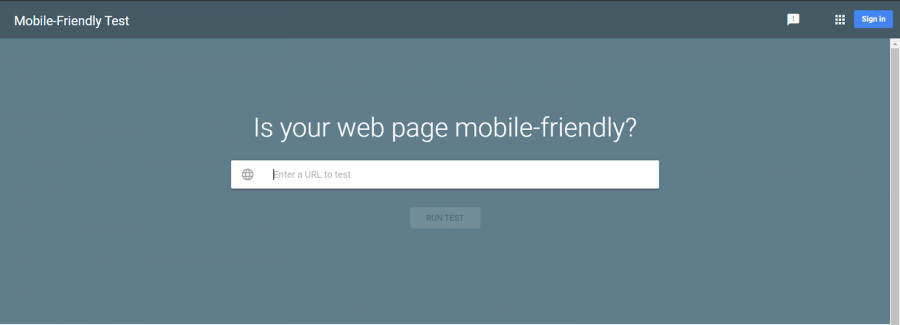Google is continually evolving, getting smarter and smarter by offering relevant, high-quality, up-to-date, and reliable results to its users. Its current algorithm iterations can now track plagiarized content, over-optimized anchor text, keyword completion, poor on-page and off-page SEO, poor mobile and UX usability, and ad-centered content.
According to a report from MarketDrive and HubSpot, 82 percent of marketers say SEO effectiveness is increasing, while 61 percent say improving and increasing their SEO strategies is their top inbound marketing priority.
As a result, online marketers are challenged to improve their game and pay close attention to detail to ensure that their SEO strategies can deliver short and long-term gains.
Staying Ahead of the SEO Game
Content has been one of the pillars of a good SEO strategy. With that said, as algorithms get smarter, companies must also make sure their content can keep up to date. Here are some tips to improve your SEO content game and make sure you stay ahead of the curve:
Always Create Quality Content
You’ve heard it a lot, but let’s say it again: content is the fire that will keep your brand going, so make sure it stays on all the time. What that means is: never underestimate the impact that high-quality content has in generating sales and making customers see you as a thought leader in your industry.
Quality content in 2022 means writing articles, creating an infographic, or producing videos that aim to educate and inform your readers. To qualify for quality content, you must:
- Always keep your target audience in mind – what do they want to know? What are their common concerns in the industry? Is there any recent news you can give your opinion on?
- Look at your competitors and evaluate your current content assets. What topics don’t they cover and what can you provide? Is there a way to improve or update an article?
- Vary your content formats by creating FAQs, tutorials, slideshows, infographics, or case studies.
- Enjoy the emotional impact of a good story.
But it’s not just about quality-quantity, so make sure you’ve posted enough content at regular intervals to keep your site up to date.
Improve the Speed of Your Page
In this fast-paced world, customers want to get everything right the moment it occurs to them. Imagine how impatient they are to access a slow loading site.
In fact, 79 percent of customers who are dissatisfied with the performance of a website would not buy from it again. Slow page speeds can also negatively affect your revenue by up to 16 percent.
Today’s growing market tells us why it is important to manage your website smoothly and continuously. More than 60 percent of consumers have shopped online using their mobile devices in the last six months alone.
Additionally, Google is now using mobile page speed as an important indicator of rankings in search results, so you better optimize your site for better user experience and better search rankings by:
- Make sure your design is responsive, so your visitors can easily navigate your website regardless of the device they are using.
- Compress your images, but make sure the quality is the same.
- Remove any Flash elements from your pages as it can make your site significantly slower.
- Continuing to test your mobile site’s layout, as people use their fingers; no mouse pointers. The buttons should be spaced apart and large enough for a normal finger to touch.
- Use Google’s mobile-friendly testing tool, so you can see where you need to improve the most.

Source: https://search.google.com/test/mobile-friendly
Optimize Image Quality
Running your own online retail business means you have to be very visual in the way you present your products. This is where the value of a well-optimized photo comes into play: Image optimization means reducing the size of the image so that it loads more quickly on your customers’ devices, without compromising quality.
To optimize your images, you must:
- Name it descriptively using language that your target market can easily understand.
- Compress your images that come in large files. A study shows that you can compress images in PhotoShop by up to 95% without affecting the quality.
- Choose product image dimensions and angles wisely, so they look good on computers and mobile devices.
- If you don’t have stock images available for your brand, there are royalty-free images that you can use to upload high-quality images to your website.
Take Advantage Of Header Tags
Header tags are used to divide sections on your website. They have one purpose: to focus on different thoughts and topics, ensuring that your messages are understood by readers in a more organized way. It also helps to divide large chunks of text into smaller sections to make them easier to read.
While it may not directly affect SEO, it can help improve the user experience by helping readers easily find the content they need. Remember: a better user experience means better ranking in the SERPs, so be sure to put clear headings on your web page
Improve Your Layout And Formatting
Creating a website with the user experience in mind means improving its design and format. This doesn’t just involve knowing where to put your icons or how to make them more impressive than other sites; it also means knowing the psychology behind why a particular section should be located in a specific area.
To help your customers easily scan and assimilate what your site offers, keep the following in mind:
- Use a font size and typeface that the audience can easily read
- Use bold and colors to get important information
- Be brief to avoid misunderstandings. Maintain adequate space between lines
- For clarity, use bullets or numbered lists
- Use techniques like siders, guides, modal windows, and mega drop-down menus to organize your site navigation.
- Divide the content into different subheads using a suitable header tag.
Create Compelling Meta Descriptions
Search engines display meta descriptions in search results, especially when the keyword or key phrase entered by the user is within the description. Meta descriptions are SEO experts’ best friends – they exist to drive search engine clicks, encouraging users to click on your link.
To do this correctly, be sure to do the following:
- Keep descriptions within 155 characters, so Google doesn’t truncate them
- Write with an active voice
- Include a call to action (for example, “Click here to get your free ebook”).
- Avoid using click tactics, as a large number of visitors leaving your site immediately would increase your bounce rate and affect your search ranking.
Source: searchenginewatch.com
Start Blogging And Optimize Your Articles
Get the most out of your website and start populating your own blog. All you need to do is create a separate page for your content, create attractive headlines to attract clicks, and make the body as long as possible, but not long enough to bore readers.
Of course, you also need to optimize your content so that search engines can find it:
- Add internal links to other pages on your site
- Include high-quality images and use alternative text to describe your image, so search engines know what those images contain
- Link related blog posts within the article body
- Provide a section for comments or analysis.
- Share your content on social media to attract more people to your site
Add A Call To Action
In any SEO strategy, linking one content to another is crucial. Don’t let customers finish reading your content at the end of the post without doing anything else.
Make sure there is a call to action, either encouraging them to contact you to request your services or directing them to a related post somewhere on your site.
Often referred to as internal linking and content layering, this strategy allows you to keep your customers within your website, offering them more content after they read one.
Keyword Search Strategies
Your keywords are important in helping potential customers find you on search engines. To do this, you need to understand the market or audience you are trying to capture and recognize their needs. You should also know what they are talking about and what they want to learn.
After collecting this data, it will be easier for you to identify the type of content you are looking for and produce it.

You can also search for related search terms. To do this, go to Google, type in a keyword related to your niche, scroll to the bottom of the results page, and search for additional keywords. In your content, be sure to use short and long-tail keywords. You can also use Google Adwords Keyword Planner and Google Trends.
Source: blog.hubspot.com
Take Your Content To The Next Level
Acing your SEO game requires a lot of trial and error before figuring out which strategy would work for you. Remember this is a long-term game. Keep producing high-quality content with the right number of links and Google will reward you.
If you found these tips helpful, let us know in the comment section below. Feel free to add your own strategies and help your fellow creators.
